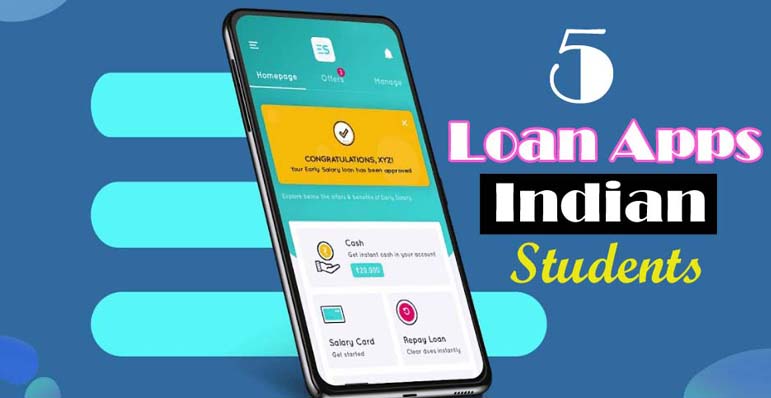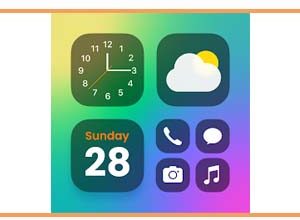Top 5 Best Instant Loan Apps 2021 For Indian Students

Although adulating can seem to be a thrilling illusion in our early adolescence, the unspoken reality of any “grown-up” out there is that independence comes with obligations, challenges, and never-ending bills. Funding a college education on our own can be a nightmare for most of us. Add clothing, food, a night out with friends, travel, and other expenses to the mix, and you’ve got yourself a budget. Isn’t this where our worst fears come true? Since most banks and financial institutions only lend to salaried professionals, students are always at a loss when it comes to dealing with personal financial issues. Don’t worry…we’ve got you covered with some fantastic mobile applications and online platforms that not only provide us students with quick and easy loans, but also offer flexible return policies with low interest rates. So, to all of our aspiring heroes and pioneers who are steadily making their way down the winding path to freedom, we present to you the life-saving software that you must have on your phones at all times. Let’s get started without further ado!
1. mPokket
[appbox googleplay appid com.mpokket.app&hl=en_IN]
Young people often face certain expenses that are difficult to bear whether they are students or have recently entered the world of work. In India, there is a service for students and young professionals that offers fast loans of between 500 and 20,000 rupees to invest in study related expenses or for living expenses. The loan must be paid back within two or three months and, depending on the amount of money received and the time for repayment, the system will calculate interest of between 1% and 6%. The expenses of matriculation, the university fees, the residence, the books, the transport voucher, the rent, the expenses in food… Any type of expense of this type will be able to be covered thanks to this money, in case the user needs it. Matriculation costs, university fees, residence costs, books costs, transportation voucher costs, rent costs, food costs… This money would be able to cover some kind of cost of this nature if the consumer requires it.
2. Pocketly
[appbox googleplay appid com.pocketly]
Pocketly gives you instant cash, anytime and anywhere! Only available to college students. Pocketly is the app for you if you’re a college student! Pocketly is a safe loan app that empowers college students in India by providing fast, short-term loans. Get loans faster and have cash on hand, no matter where you are! Students may use Pocketly to get credit to buy items that will help them not only with their academics and tuition fees, but also with their hobbies and other interests without having to compromise. We also assist them in establishing a solid credit profile before they enter the real world to give them an advantage.
3. RedCarpet
[appbox googleplay appid com.redcarpetup.rewardpay]
Students may use RedCarpet to get instant loans for a variety of online and offline transactions. On loans ranging from 1,000 to 6,000 INR, the platform offers an interest-free, one-month return policy. Users who apply for EMI options have the option of repaying the balance over three, six, nine, or twelve months. The app has a built-in tracker to ensure the users’ safety and security at all times. It also has a Platinum Mastercard that can be used for a variety of items, including online shopping, ATM cash withdrawals, and POS purchases.
4. KrazyBee
[appbox googleplay appid com.krazybee.customer&hl=en&gl=US]
KrazyBee is the best college friend a student can have. In a nutshell, KrazyBee is a website that allows college students in India to buy something online using a monthly payment plan. The best aspect is that the student does not need a credit card to use KrazyBee. Whether it’s getting the latest smartphone to flaunt, your preferred laptop to help you complete your assignments quickly and efficiently, your favourite pair of jeans or glares (which may be out of style by the time you save up the money), getting the best studs for the Football tournament trials next month, or assisting you in getting the watch you want to give your mother on her birthday, we can help. After all, money can wait, but opportunities and occasions can’t! Making regular monthly payments not only helps you become more financially stable, but it also improves your credit score, which would make it easier for you to obtain loans (house loans, auto loans, and so on) in the future. So take advantage of the opportunity, press the install button, and let your dreams take flight the way they’ve always wanted to!
5. Sahukar
[appbox googleplay appid com.sipl.udhaar]
Students can get personal loans via the Sahukar App, which is an app-only loan lending platform. To help students achieve their short-term financial goals, Udhaar Card offers personal loans ranging from Rs 100 to Rs 5,000 for terms of 30, 60, and 90 days. Students are given a Sahukar Score, a proprietary algorithm created by the company’s founders, since they are not used to getting a Credit Score and are therefore refused loans by financial institutions. This simplifies the process of securing a loan by removing the complexities. There is no extensive paperwork or human contact involved with the documentation, loan disbursement, or repayment. Come get an Udhaar with us and complete your requirements. Come get your Udhaar with us. Come get an Udhaar with us and get your needs met.
Conclusion
As a result, we’ve come to the end of our list of the top 5 instant loan applications for all of our fellow students. This new decade list is the ideal solution to all of our financial issues, as we will no longer have to wait for our next paycheck or borrow money from friends.
Humbly Request To All Visitors!
If you found above both downloading link expired or broken then please must inform admin by fill this Contact Us! Form


